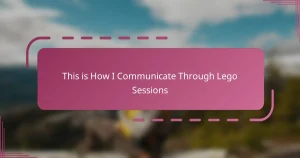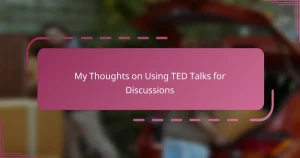Key takeaways
- Storytime events foster language development, imagination, and emotional intelligence in children through engaging narratives and shared experiences.
- Choosing the right storytime program involves considering your child’s age, interests, and the storyteller’s style to maximize engagement.
- Preparing your child for storytime with familiar items and encouraging early exploration can enhance their comfort and excitement.
- Incorporating storytime at home by creating a cozy space and maintaining lively interactions transforms reading into an enjoyable, bonding experience.
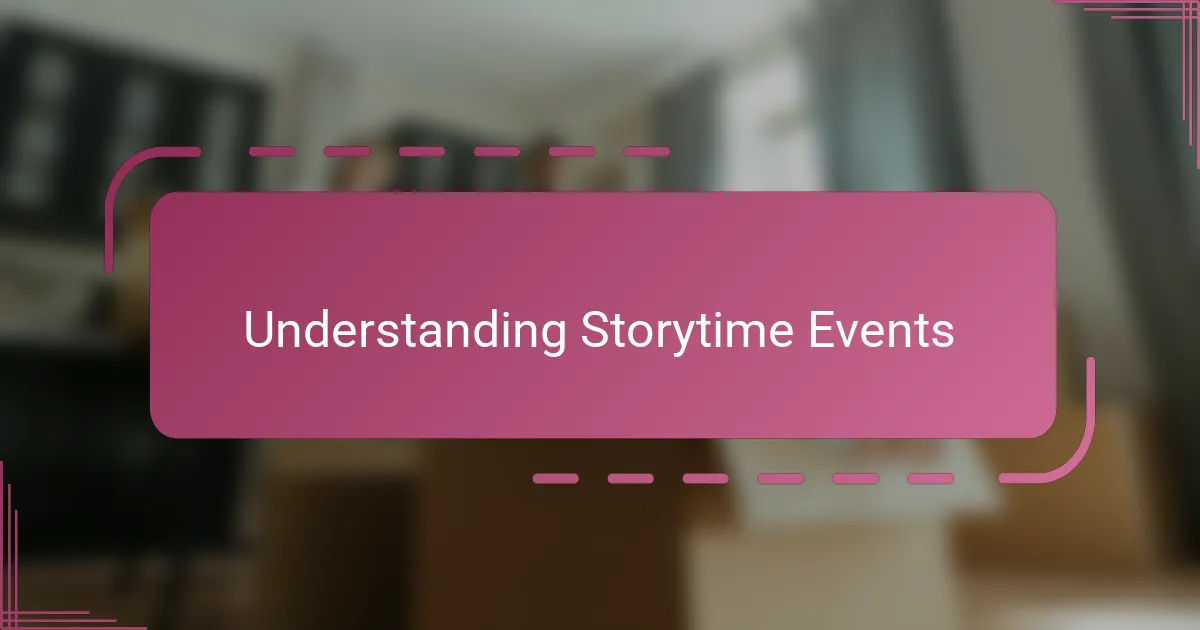
Understanding Storytime Events
Storytime events at bookstores like Barnes & Noble are more than just reading sessions; they’re carefully crafted experiences designed to spark a love for books in young minds. Have you ever noticed how the energy in the room shifts when a story begins? That moment when children’s eyes light up, hanging on every word, really reveals the magic of these gatherings.
From my experience, understanding these events means recognizing their role in early childhood development. Beyond entertaining, they introduce kids to new vocabulary, rhythm, and expression. It’s like a mini community where families connect over shared stories and enthusiasm.
What surprises me most is how these sessions often adapt to different age groups and themes, keeping each visit fresh and exciting. Have you ever wondered why certain stories catch your child’s attention more than others? That’s the beauty of storytime—it’s tailored, lively, and deeply enriching.
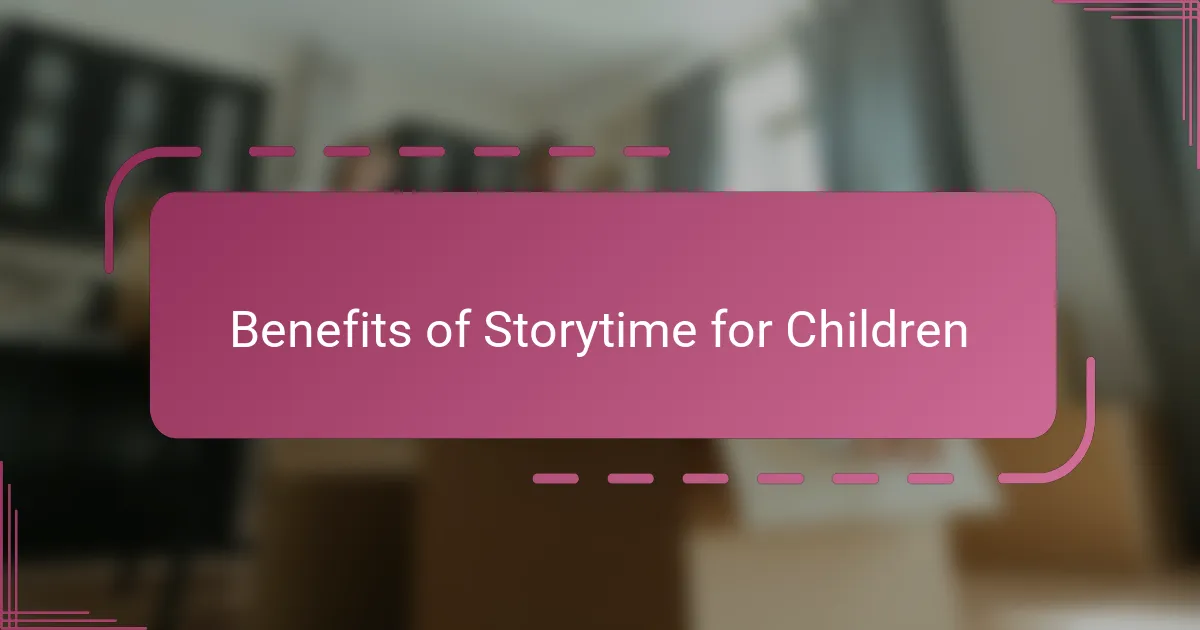
Benefits of Storytime for Children
One of the biggest benefits I’ve seen from storytime is how it naturally boosts children’s language skills. Listening to stories introduces them to new words and phrases in a context that feels playful, not like a lesson. Have you noticed how your child starts using new expressions or twists in speech after a few story sessions? It’s like their own vocabulary garden begins to bloom.
Storytime also offers so much more than just language growth—it fosters imagination and emotional intelligence. When kids hear about different characters and situations, they start putting themselves in those shoes. I’ve watched shy children slowly gain confidence as they relate to the heroes and challenges in the stories, and that emotional connection is priceless.
What really amazes me is how these events encourage social skills without the pressure. Sitting together, reacting, and sometimes even participating prompts kids to engage with others naturally. Watching small groups form friendships around shared stories reminds me that storytime is as much about community as it is about books. Have you seen this kind of camaraderie develop during your visits? It’s truly heartwarming.

Choosing the Right Storytime Program
When choosing the right storytime program, I’ve found it’s important to consider your child’s age and interests. Some sessions cater specifically to toddlers with interactive songs and simple stories, while others engage older kids with more complex narratives. Have you ever noticed how your child reacts differently to storytimes based on these factors? That response can be a great guide.
I also pay attention to the theme and style of the storyteller. A lively, animated reader can transform a session and keep restless little ones captivated. From my experience, those storytellers who encourage participation make all the difference, turning a passive activity into an exciting adventure.
Lastly, location and timing matter more than we might expect. Picking a program that fits smoothly into your routine helps everyone feel relaxed and look forward to the experience. Have you tried different days or times at Barnes & Noble to see what works best for your family? That small tweak can really enhance the whole visit.
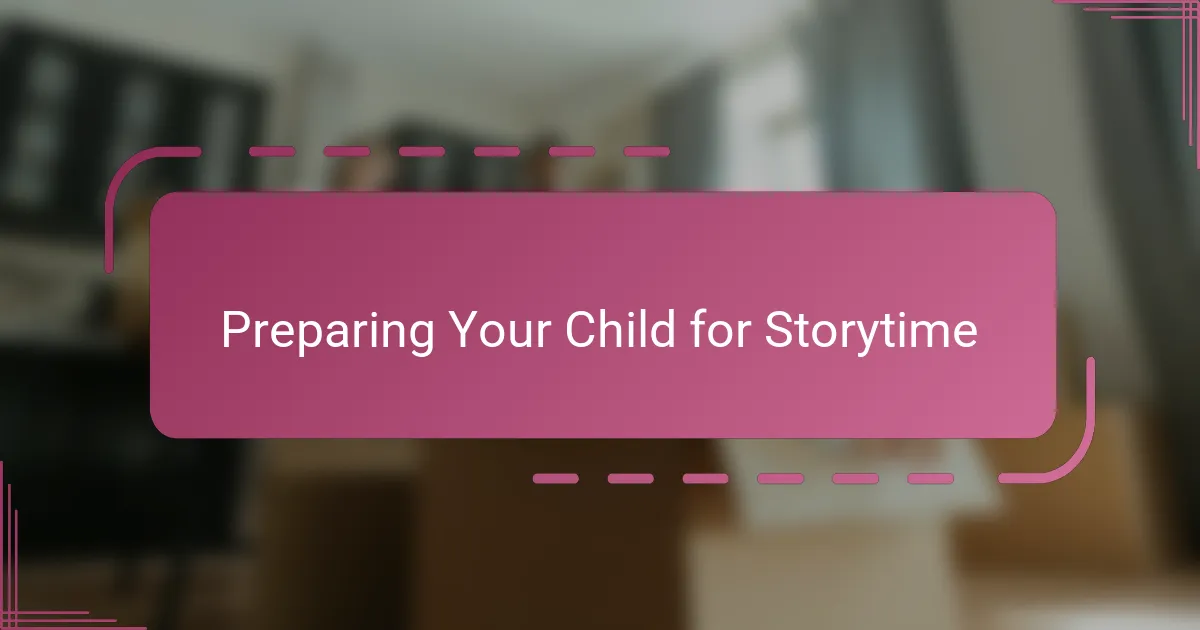
Preparing Your Child for Storytime
Getting your child ready for storytime at Barnes & Noble can really set the tone for an enjoyable experience. I always find it helpful to talk with my child beforehand about what to expect—like sitting still, listening closely, and maybe even joining in with songs or motions. Have you ever noticed how a little heads-up makes them feel more confident and curious rather than anxious?
Sometimes, I bring along a favorite blanket or small toy to help my child feel comfortable in a new setting. It’s amazing how something familiar can ease any nervousness and make storytime feel like a cozy adventure rather than a big unknown. Do you have any little comforts that work for your child when stepping into new situations?
Also, I try to arrive a bit early so my child can explore the children’s section without pressure. That quiet time helps them settle into the environment and sparks excitement about all the books they might hear about during the session. Have you discovered that these small moments before storytime start can really transform your child’s mood?
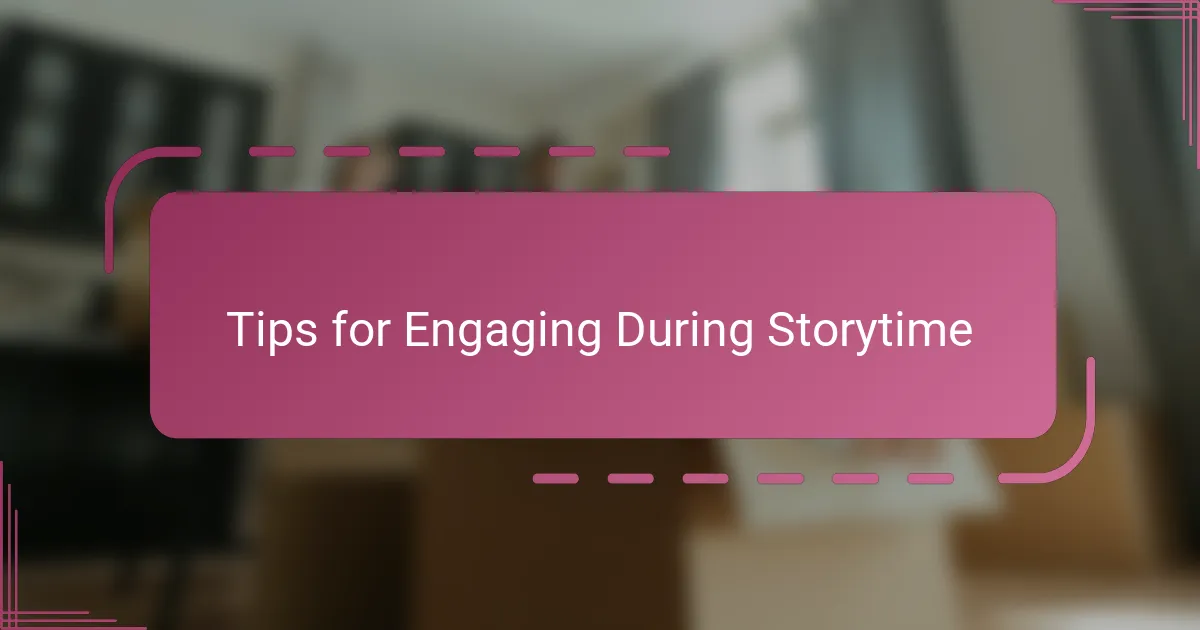
Tips for Engaging During Storytime
One thing I’ve learned is that making eye contact with the storyteller and your child really helps keep everyone engaged. When I watch my little one’s eyes lock onto the reader, I notice they’re more likely to join in with responses or sing-alongs. Have you found that small connection makes storytime feel more interactive and fun?
I also suggest encouraging your child to participate, whether it’s repeating phrases or acting out parts of the story. From my experience, this involvement boosts their confidence and keeps their attention from wandering. Isn’t it incredible how a simple “can you say that with me?” transforms a passive listener into an eager participant?
Lastly, bringing along your own enthusiasm sets a great example. I remember one storytime when I exaggerated voices and gestures, which sparked my child’s excitement like nothing else. Do you think your energy could be the secret ingredient that turns storytime into a memorable adventure?

My Experience at Barnes Noble Storytime
Walking into the Barnes & Noble storytime felt like stepping into a little world where books came alive. I remember the way my child’s face lit up as the storyteller’s voice shifted with each character—it was pure magic. Have you ever seen a room full of kids so captivated and quiet, hanging on every word? It really reminded me how powerful stories can be when shared in the right setting.
What struck me most was the welcoming atmosphere. Families from different backgrounds gathered with their little ones, creating a sense of community I didn’t expect. I noticed how my child quickly made friends during the session, all united by the shared joy of listening to a story. Don’t you think that kind of connection is what makes storytime more than just a reading event?
At the same time, I appreciated how well the session was paced—never too long, never rushed. The storyteller’s enthusiasm kept everyone engaged, and the mix of songs and movement made it easier for restless kids to stay focused. Reflecting on that day, I think that balance is key for any parent hoping to make storytime a highlight of the week. Have you found that when a session feels just right, your child asks to go back again and again?
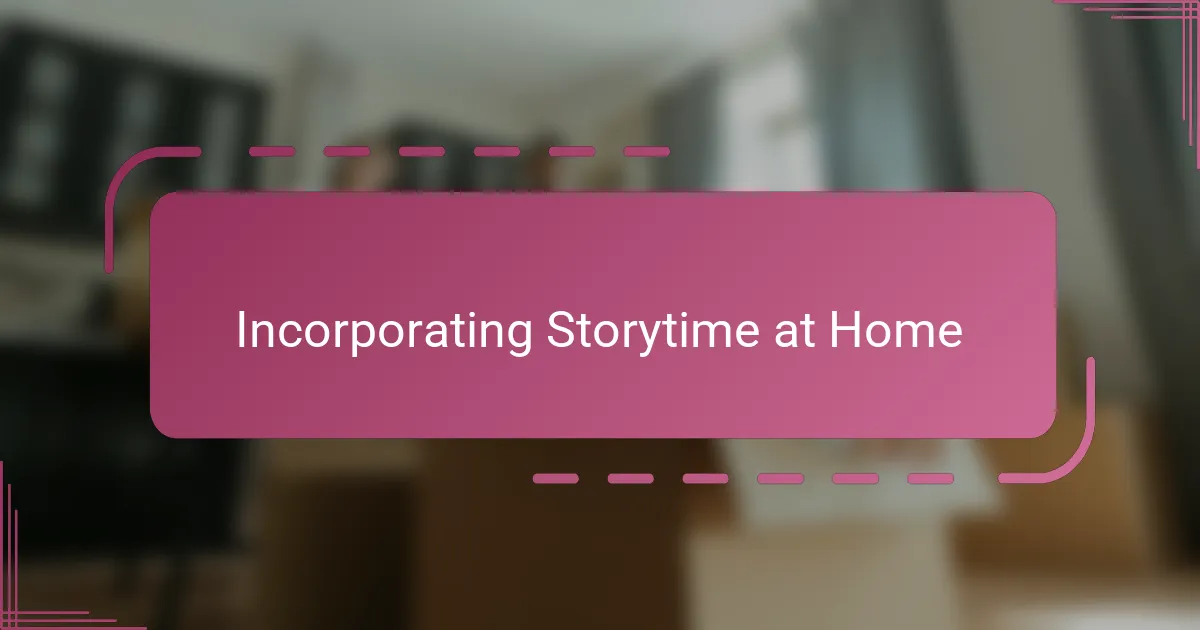
Incorporating Storytime at Home
Bringing storytime vibes from Barnes & Noble into your home can be a game changer. I like to set aside a special, cozy corner with cushions and a few favorite books—it creates a little sanctuary where storytelling becomes an event. Have you tried making that dedicated space? It really signals to kids that this is a special time worth looking forward to.
Another thing I’ve found helpful is keeping the energy lively, just like at the bookstore. Using different voices or adding simple sound effects can turn a quiet reading into an adventure that captures attention. When I do this, my child’s eyes light up, and suddenly, they’re not just listening—they’re part of the story. Doesn’t it feel great to see them so engaged right in your living room?
I also encourage interactive moments, asking questions like, “What do you think happens next?” or “How would you feel if you were that character?” These little prompts invite imagination and make storytime a two-way conversation. Have you noticed how your child’s ideas sometimes surprise and delight you? That exchange is exactly why I treasure reading time together—it’s as much about connecting as it is about the stories.
